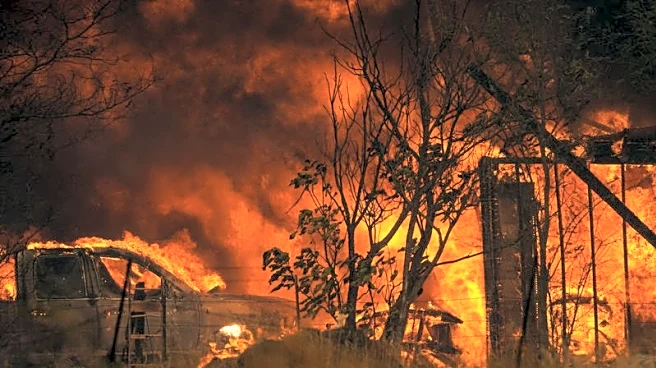What's Happening?
A significant volcanic eruption occurred at Sakurajima, located on the western Japanese island of Kyushu, resulting in the cancellation of over 30 flights. The eruption, which is the largest in over a year,
spewed ash 2.73 miles into the air. The Japanese Meteorological Agency reported the initial eruption on November 16, followed by two more eruptions. Despite the magnitude, there have been no reports of damage to buildings or loss of life, and no pyroclastic flow has been observed. The ash traveled northeast, affecting Kagoshima Airport, which is situated north of the volcano.
Why It's Important?
The eruption has significant implications for air travel and safety in the region. The cancellation of flights impacts both domestic and international travel, potentially affecting tourism and local economies. The event underscores the importance of monitoring volcanic activity and implementing safety measures to protect residents and travelers. The disruption also highlights the need for effective communication and contingency planning in response to natural disasters.
What's Next?
Authorities are likely to continue monitoring the volcano for further activity. The Japanese Meteorological Agency may issue additional warnings or advisories to ensure public safety. Airlines and airports will need to assess the situation and determine when it is safe to resume flights. Local governments may also consider evacuation plans or other measures to protect residents in the event of further eruptions.















